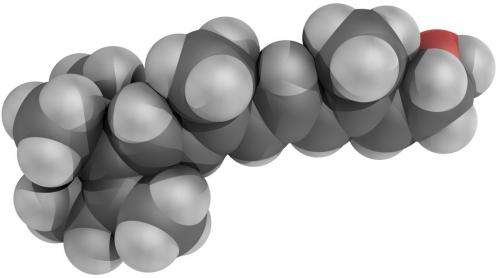
A recent study conducted by a research team led by Florian Kiefer from MedUni Vienna’s Division of Endocrinology and Metabolism shows that cold ambient temperatures increase vitamin A levels in humans and mice. This helps convert “bad” white adipose tissue into “good” brown adipose tissue, which stimulates fat burning and heat generation. This “fat transformation” is usually accompanied by enhanced energy consumption and is therefore considered a promising approach for the development of novel obesity therapeutics. The study has now been published in the leading journal Molecular Metabolism.
Humans and mammals have at least two types of fatty depots, white and brown adipose tissue. During obesity development, excess calories are mainly stored in white fat. In contrast, brown fat burns energy and thereby generates heat. More than 90% of the body fat depots in humans are white, which are typically located at the abdomen, bottom and upper thighs. Converting white into brown fat could be a new therapeutic option to combat weight gain and obesity.
A research group led by Florian Kiefer from the Division of Endocrinology and Metabolism, Department of Medicine III at MedUni Vienna has now demonstrated that moderate application of cold increases the levels of vitamin A and its blood transporter, retinol-binding protein, in humans and mice. Most of the vitamin A reserves are stored in the liver and cold exposure seems to stimulate the redistribution of vitamin A toward the adipose tissue. The cold-induced increase in vitamin A led to a conversion of white fat into brown fat (“browning”), with a higher rate of fat burning.
When Kiefer and his team blocked the vitamin A transporter retinol-binding protein in mice by genetic manipulation, both the cold-mediated rise in vitamin A and the browning of the white fat were blunted: “As a consequence, fat oxidation and heat production were perturbed so that the mice were no longer able to protect themselves against the cold,” explains Kiefer. In contrast, the addition of vitamin A to human white fat cells led to the expression of brown fat cell characteristics, with increased metabolic activity and energy consumption.
Source: Read Full Article
